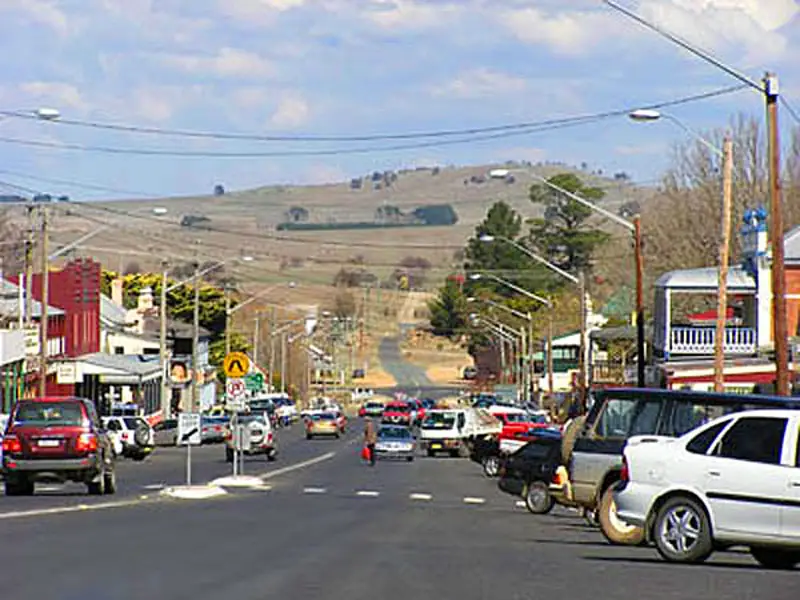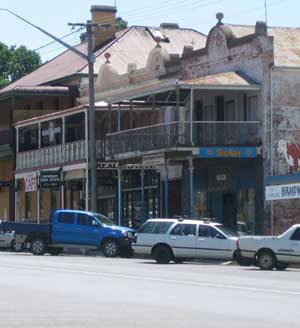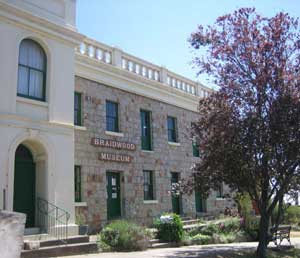
Braidwood
A popular day trip destination for the people of Canberra, Braidwood (86 km south east) is an historic goldmining town, and a service town for the surrounding region which is based on sheep and cattle grazing and forestry operations.
Of the many historic towns in NSW, Braidwood was probably least changed by the 20th century. A proud local boast is that a resident from 100 years ago could walk down Wallace Street today and recognise almost every building along the main thoroughfare. Its lack of change led the NSW Heritage Council to make Braidwood the state’s first heritage-listed complete town. In effect, the entire town centre has been declared a site of statewide, if not national, significance. Not only does the Heritage Council consider Braidwood the state’s best surviving example of a Georgian town plan, but it also has an unrivalled wealth of 19th-century buildings and streetscapes.
Beautiful churches, pubs, cafes, galleries, craft and antique shops all operate in sensitively restored old buildings which have served the town since the frantic gold rush days of the 1850s.
European explorers reached the district in 1822 (Kearns, Marsh and Packer). The area was first settled by Europeans in the 1820s, and the town was surveyed in 1839. The village was located near the headwaters of the Shoalhaven River.
The town was named after Dr Thomas Braidwood Wilson. He had been a surgeon-superintendent of ships taking convicts to New South Wales and Van Diemen’s Land (now known as Tasmania). He was first granted land in Van Diemen’s Land in 1824, which he exchanged for land near Lake George in 1825. In addition he was given 2560 acres which he selected in the ‘new country’ on two tributaries of the Shoalhaven, Monkittee and Flood creeks. In 1833, the western end of Wilson’s grant was resumed and reserved for a future village and a similar area added to the eastern end in compensation.
Wilson settled in the district in late 1836 with his wife and family. He became a community leader and amongst other things contracted to build the first courthouse in 1837-38. In 1840 Wilson petitioned the government to build a road from Braidwood to Huskisson to enable faster and cheaper shipping of the wool clip to Sydney and, with Col. John Mackenzie, supplied the materials and labour for the Braidwood to Nerriga section.
In 1841 Braidwood Farm had 141 residents. Wilson was sent bankrupt due to a drought in the late 1830s and the subsequent depression. He died in November 1843. A memorial and large pine tree mark the site of Wilson’s grave, from which there are views of the town. The path to the grave is open to the public the path and is through a series of paddocks intersected by gateway sculptures and installations by local artists. At the moment, (June 2010), the path is not open to the public. It is recommended to check the status of the path at the tourist information center in Wallace Street, which is the main street of Braidwood.








